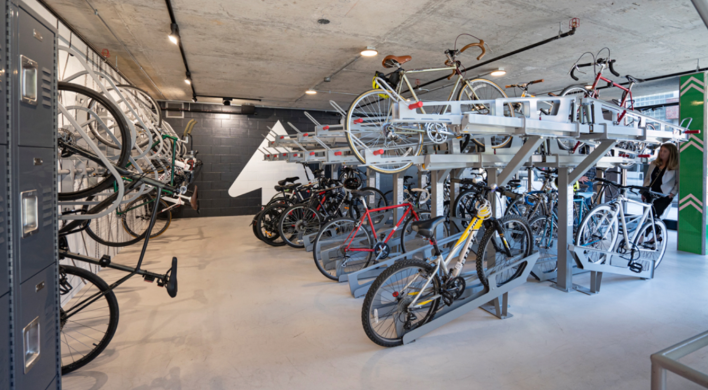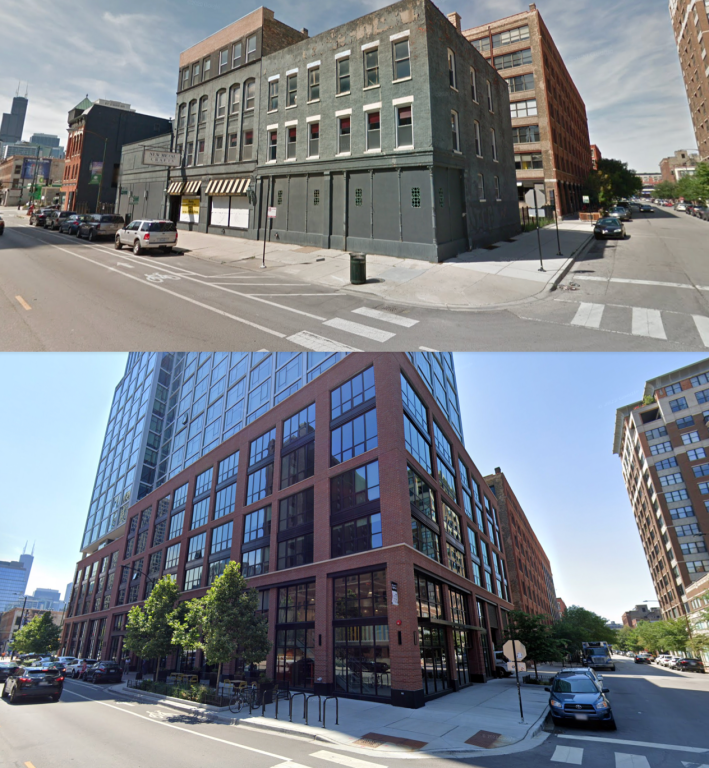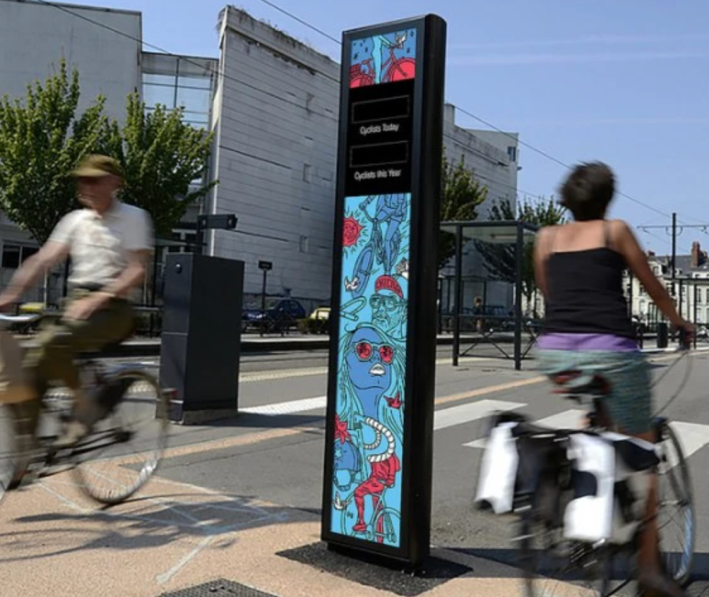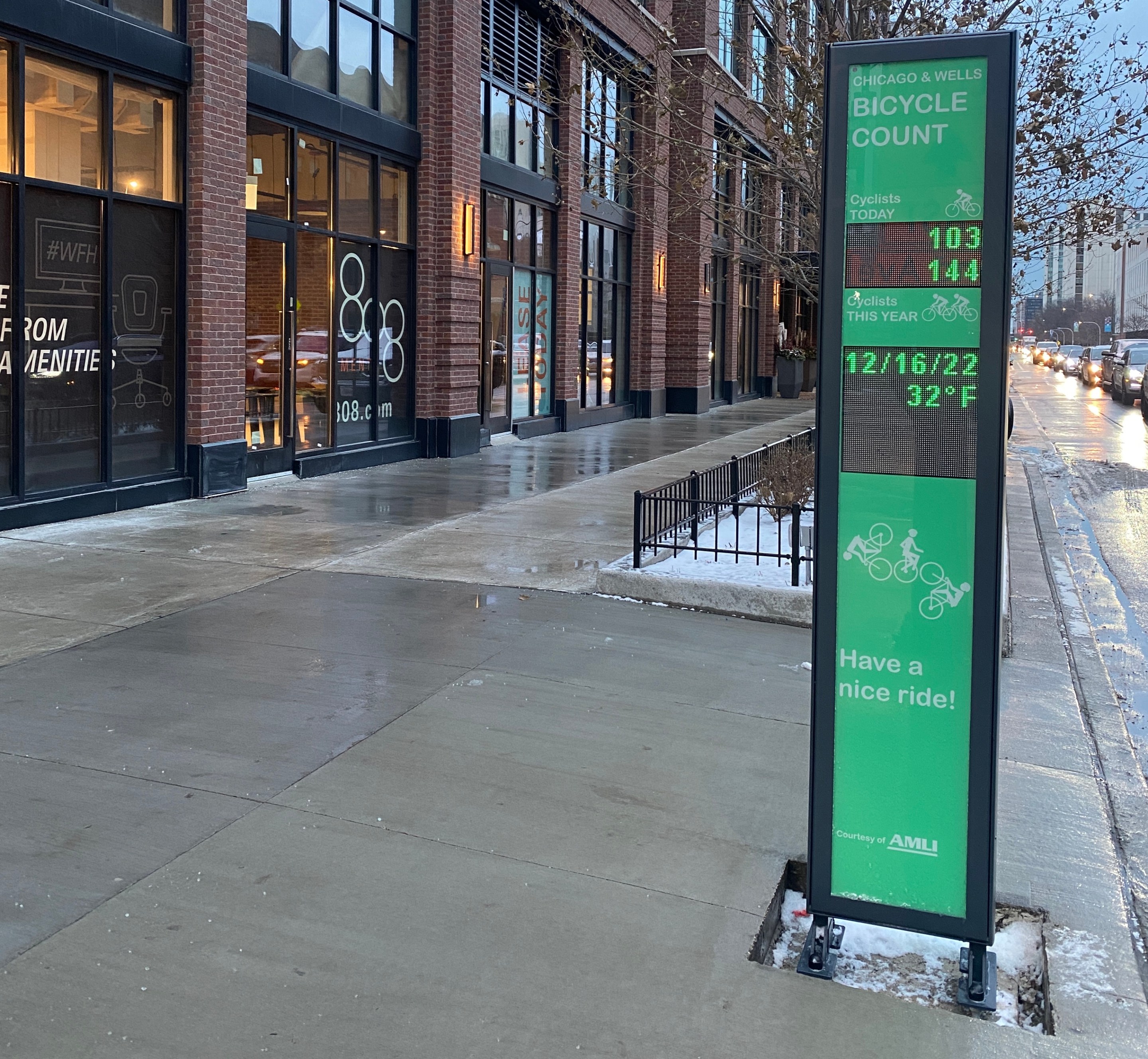Finally! After years of waiting, and one super-disappointing false start (more on that in a bit), Chicago got its first bike counter yesterday. The device is located at in front of AMLI 808, an apartment building on the northwest corner of Chicago Avenue and Wells Street in River North, and was purchased and installed by the AMLI real estate company.
These devices are great for counting exactly how many people are traveling by bike per day and per year on a given corridor. (This one also shows the date and temperature.) They offer an excellent rebuttal to people who oppose bike infrastructure upgrades with the argument, "Why should we do this? Nobody rides bikes here."
Wells Street, which currently has non-protected "door zone" bike lanes, is an ideal location because it's probably the busiest on-street cycling route between the Loop and North Lakefront neighborhoods. During one spring 2015 weekday AM rush period, the Chicago Department of Transportation counted 543 bike riders on Wells at Chicago Avenue, the exact location where the counter was installed.

Moreover, Wells badly needs curb-protected or raised bike lanes. In October 2012, attorney Neill Townsend, 32, was biking downtown on Wells Street in front of Walter Payton High, two blocks north of AMLI 808, when a person in a car opened their door in his path, Townshend swerved out of the way, and was run over and killed by a trucker. Well-designed protected bikeways prevent crashes like this by keeping bike riders out of the way of car doors and shielding them from moving traffic.
Last month bike advocate Sam Brunson's daughter Jane, 17, was run off the road as she biked to her classes at Payton. Brunson and other parents have called for upgrading the Wells lanes with physical protection to help keep their kids safe.
AMLI senior vice president of development Jennifer Wolf told Streetsblog the company would support adding physical protection to the Wells bike lanes.

Wolf said the developer decided to install the bike counter, manufactured by Eco Counter, as part of several sustainable transportation initiatives associated with AMLI 808. The building, located a stone's throw from the Chicago Avenue Brown and Purple 'L' station, is a transit-oriented development with 318 apartments but only 16 car parking spaces. It features a two-story bike room with over 300 parking spaces, four lockers for electric bikes and non-standard-size cycles; automatic doors on the first floor; a repair stand; and an air pump. AMLI also sponsored a Divvy bike-share station next to the building, and the building construction project involved widening the Wells sidewalk

Wolf said she's working with Eco Counter to make the bike ridership data publicly available. That would give local data wizzes the opportunity to design some interesting graphs and apps with the info.
Maddeningly, a similar bike counter was slated to be installed years ago on Milwaukee Avenue, the city's busiest biking street, in Wicker Park, but that plan was reportedly cancelled due to city bureaucracy. In November 2016, the developer of a new transit-oriented development at 1237 North Milwaukee, LG Partners, was donating an Eco-Totem bike counter to the city, and planned to pay for the Chicago Department of Transportation to install a sidewalk bump-out to make room for the device. The counter, featuring an eye-catching design chosen by Streetsblog Chicago readers, had already been manufactured, and the City Council had approved the installation, which was slated for spring 2017.

In May 2018, former LG Partners representative Barry Howard told Streetsblog the bike counter installation plan stalled after the building was sold to Los Angeles-based real estate company CIM Group the previous fall. The city of Chicago’s law department required a new economic disclosure statement from CIM, and the company becoming frustrated with the process and gave up.
Howard added that the project had been further complicated in summer 2017 when CDOT closed a slip lane at the northwest corner of the Division/Ashland/Milwaukee intersection, next to the planned sidewalk bump-out location, and the department said that it was no longer possible to install the bump-out.
Aggravating as that story is, it's all water under the bridge now that Chicago finally has a real-life bike counter. "It provides a really cool visual to people and raises awareness of bicycling," AMLI's Jennifer Wolf said. "I'd like to see more of these across the city."





